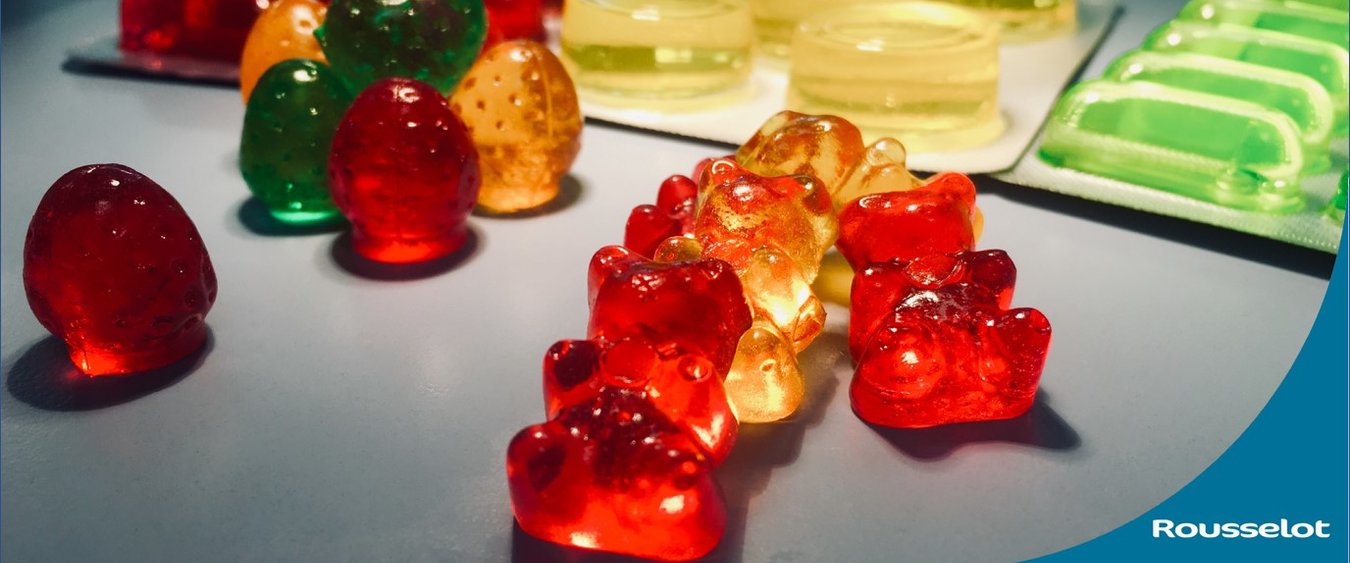
SiMoGel is a gelatin-based solution that solves several problems and creates several new opportunities all at once for confectionery manufacturers. For instance, it reduces time, cost and energy consumption during production, increases process hygiene, and opens the door to novel 3D shapes, layered coloring and soft fillings (read more on our SiMoGel page). SiMoGel enables manufacturers to achieve superior gummies with a unique melt-in-the-mouth textures that consumers love and cannot be produced with alternative gelatins. We developed it and launched it in 2017, in answer to numerous developments happening at the same time, explains Ivo.

‘We had already noticed a growing trend towards adding minerals, vitamins and other health ingredients to confectionery products in the nutra- and pharmaceutical markets. Some of our customers were asking us to look into the best way of combining the usual confectionery ingredients with nutrients like these. This tied in with our own innovation efforts at Rousselot and the continuous push for expanding our portfolio of gelatin applications.’
Finding a gelatin with record gelation speed
When fortified sweets began to grow, the starch molds used in traditional gelatin-based confectionery were not received well in this segment. In the nutraceutical and pharmaceutical world, production lines change frequently and drastically, so absolute hygiene is required. This is challenging if you’re using starch molds, with starch powder easily cross-contaminating ingredients between batches. Silicone/metal molds traditionally used for pectin gummies were in use, partly because pectin meets the need for high-speed gelation in confectionery production. So in order to offer a viable alternative, we asked ourselves: how fast can we get gelatin to set? Explains Ivo: ‘None of the gelatins known until then had short gelation times.’

Testing with gelatins of varying bloom and viscosity as well as different recipes, Ivo and his colleagues eventually found a gelatin that worked – at least in the lab. Did that mean the innovation now known as SiMoGel was about take over the confectionery market? Far from it, says Ivo. ‘There are so many steps to take before launching an innovation.’ In this case, one major step was to find an industry partner willing to test the new gelation solution in a production environment. The hurdle was taken in the months that followed, and soon SiMoGel was successfully validated on Baker Perkins equipment.
‘You might think we threw a party at Rousselot when this milestone was reached, but again, it was one of many smaller steps that we quietly taking. Sure, we got a lot of appreciation from Rousselot for our work, but I don’t think any of us every thought of throwing a celebration party.’
Even after validation and market launch, the journey of SiMoGel was a gradual one, says Ivo. ‘It was launched in 2017. There was a good amount of interest, but it takes time for interest to turn into business. We had to more testing, to prepare for as wide a range of production settings as possible. And manufacturers eager to use it had to make changes and investments too. Now, in 2021, we are getting more requests and questions about it than we did at launch. A new product, regardless of how revolutionary it is, has to earn its position.’
